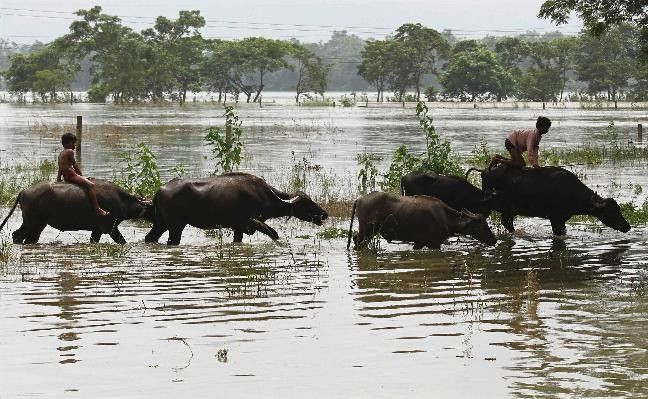Assam, Northeast India Battered By Historic Floods

At least 27 people have been killed and another 900,000 displaced from their homes by the worst flooding witnessed in Assam in 14 years.
According to reports, 21 of the northeastern Indian state’s 27 districts have been inundated by rising floodwaters caused by torrential rainstorms.
“The current flood is [the] biggest [one] since 1998,” said Nilamoni Sen Deka, Assam’s agriculture minister and government spokesman.
Assam has been smashed by heavy monsoon rains for the past two weeks. The neighboring state of Bangladesh has lost at least 100 lives through heavy storms and massive landslides.
The Hindustan Times newspaper reported that more than 70,000 hectares of crop areas in Assam have been damaged, leading to likely price rises in agricultural products.
The provincial government has opened up about 150 temporary shelters for people fleeing the raging waters.
The excessive rain has also severed road and rail transport across much of Assam.
India media noted that the monsoon season has dumped 31 percent more rainfall upon Assam than is normal. The Indian Meteorological Department predicted that the wet weather will persist well into July, thereby creating more flooding misery for the Assamese.
However, monsoons are integral to Assamese culture -- the average 120 inches of annual rainfall are essential to its key tea industry and is largely responsible region’s spectacular bio-diversity.
Indeed, for the broader region, including Bangladesh, West Bengal and other neighboring states, monsoons and cyclones are normal parts of the annual life cycle -- as routine as life and death. Each monsoon takes away hundreds, even thousands, of lives; cyclones arte even deadlier. A particularly deadly cyclone in Bangladesh in 1970 – the Bhola cyclone – killed an astonishing half a million people.
© Copyright IBTimes 2024. All rights reserved.





















